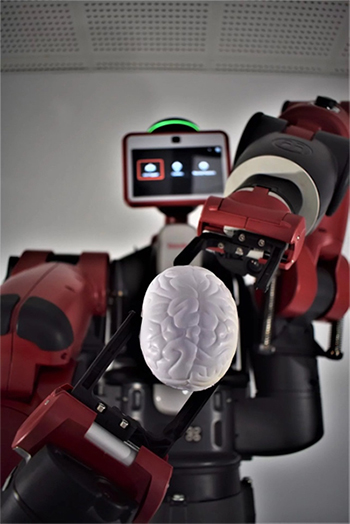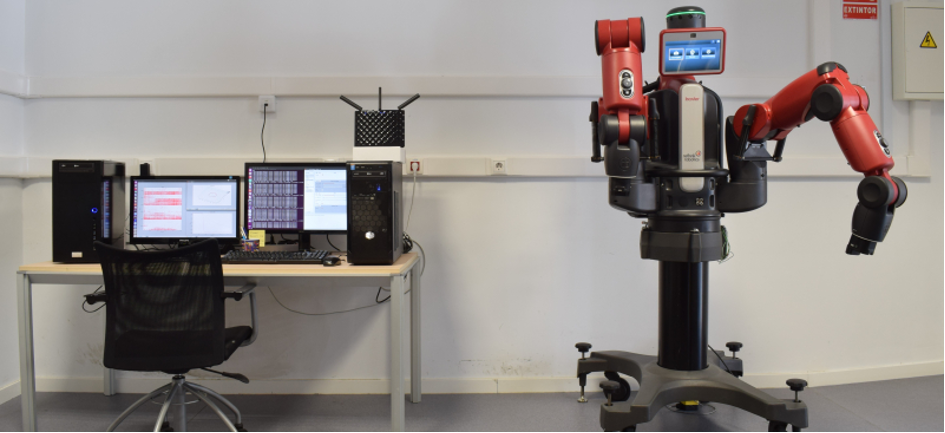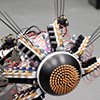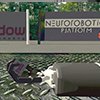- Press Release
Human Brain Project: Researchers design artificial cerebellum that can learn to control a robot’s movement
07 December 2021
Researchers at Human Brain Project partner University of Granada in Spain have designed a new artificial neural network that mimics the structure of the cerebellum, one of the evolutionarily older parts of the brain, which plays an important role in motor coordination. When linked to a robotic arm, their system learned to perform precise movements and interact with humans in different circumstances, surpassing performance of previous AI-based robotic steering systems. The results have been published in the journal Science Robotics.

The Robot used by the Applied Computational Neuroscience research group of the University of Granada. © Ignacio Abadía
It is the most biologically realistic and detailed model of the cerebellum to date capable of work in real-time, and replicates not only aspects of the structure, but also its adaptability and capacity to learn. By taking inspiration from the brain in this way, the scientists were able to solve one of the common technological challenges in robotics: Their cerebellar spiking neural network enables the robot to deal with so-called latency, or time delays, which is a central real-world problem for computational systems in robotics, especially during wireless or remote steering.
The research could also help to control new bio-inspired robots, which are equipped with elastic and flexible components that replicate the muscles and tendons of the human body. Such “co-bots” are safer for human interaction, but their flexibility makes it difficult to use classical control techniques.
The work of the Applied Computational Neuroscience research group - led by Prof. Eduardo Ros - has been published in the journal Science Robotics.

© Ignacio Abadía
Original Publication:
Abadía, I., Naveros, F., Ros, E., Carrillo, R. R., & Luque, N. R. (2021). A cerebellar-based solution to the nondeterministic time delay problem in robotic control. Science Robotics, 6(58), eabf2756.
Contact:
Ignacio Abadía Tercedor
iabadia@ugr.es
Prof. Eduardo Ros
eros@ugr.es
Other Neurorobotics work in the Human Brain Project:

A robot on EBRAINS has learned to combine vision and touch
On the new EBRAINS research infrastructure, scientists of the Human Brain Project have connected brain-inspired deep learning to biomimetic robots. Read more

EBRAINS robot simulation one step closer to in-hand object manipulation
A team of scientists in the Human Brain Project is using the EBRAINS research infrastructure to learn more about how the brain coordinates complex hand movements. Read more
Media Contact:
Peter Zekert
Tel.: +49 2461 61 96860
press@humanbrainproject.eu
ABOUT THE HUMAN BRAIN PROJECT

The Human Brain Project (HBP) is the largest brain science project in Europe and stands among the biggest research projects ever funded by the European Union. It is one of the three FET Flagship Projects of the EU. At the interface of neuroscience and information technology, the HBP investigates the brain and its diseases with the help of highly advanced methods from computing, neuroinformatics and artificial intelligence, and drives innovation in fields like brain-inspired computing and neurorobotics.
ABOUT EBRAINS

EBRAINS is a new digital research infrastructure, created by the EU-funded Human Brain Project, to foster brain-related research and to help translate the latest scientific discoveries into innovation in medicine and industry, for the benefit of patients and society.
It draws on cutting-edge neuroscience and offers an extensive range of brain data sets, a multilevel brain atlas, modelling and simulation tools, easy access to high-performance computing resources and to robotics and neuromorphic platforms.
All academic researchers have open access to EBRAINS’ state-of-the art services. Industry researchers are also very welcome to use the platform under specific agreements. For more information about EBRAINS, please contact us at info@ebrains.eu or visit www.ebrains.eu.



